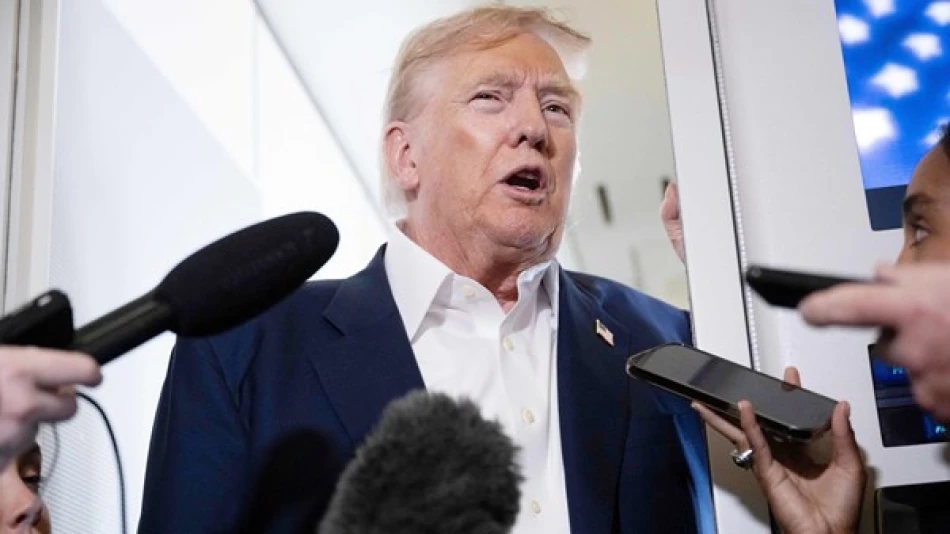
Trump Imposes Tariffs on Indian Goods, Escalating Trade Tensions
Trump Escalates Trade War with 25% Tariffs on India, Targeting World's Highest-Tariff Nation
President Donald Trump announced Wednesday that the United States will impose 25% tariffs on India starting August 1, marking a significant escalation in America's trade confrontations with major economies. The move targets India's notoriously high import duties and could reshape bilateral trade relations between the world's largest democracies, potentially affecting everything from pharmaceuticals to technology services that form the backbone of the $190 billion trade relationship.
Trump's Justification: Reciprocity Against "World's Highest" Tariffs
Speaking on Truth Social, Trump justified the tariffs by pointing to India's protectionist trade policies. "We don't trade much with them because their tariffs are among the highest in the world," the president stated, signaling a shift toward his campaign promise of reciprocal trade measures.
India indeed maintains some of the world's steepest import duties, with tariffs ranging from 7.5% on electronics to over 100% on certain agricultural products and automobiles. This protectionist approach has long frustrated American exporters, particularly in sectors like Harley-Davidson motorcycles, medical devices, and agricultural products.
Strategic Timing Amid Broader Trade Offensive
The India announcement comes as Commerce Secretary Howard Lutnick indicated Tuesday that Trump would finalize multiple trade decisions this week, even as separate negotiations continue with China and the European Union. This suggests a coordinated approach to reshape America's trade relationships simultaneously across multiple fronts.
Market Implications and Investor Concerns
The tariff announcement could significantly impact several sectors. Indian pharmaceutical companies, which supply roughly 40% of generic drugs to the US market, may face increased costs that could drive up American healthcare expenses. Meanwhile, US technology companies with significant operations in India—including major outsourcing relationships—may see retaliatory measures affecting their cost structures.
Currency markets have already begun pricing in potential volatility, with the Indian rupee showing weakness against the dollar following the announcement.
Historical Context: Déjà Vu from Trump's First Term
This move echoes Trump's previous trade battles with India from 2017-2021, when his administration removed India from the Generalized System of Preferences program and imposed tariffs on steel and aluminum. India retaliated then with duties on US almonds, apples, and motorcycles—a pattern that may repeat.
Unlike his approach with China, which focused primarily on technology transfer and intellectual property, Trump's India strategy appears centered on pure tariff reciprocity, potentially making it easier to resolve but also more predictable for markets to price in.
Broader Implications for Global Trade Architecture
The India tariffs represent more than bilateral friction—they signal Trump's intention to systematically challenge high-tariff economies worldwide. This approach differs markedly from the multilateral trade liberalization that characterized previous decades and could encourage other nations to adopt similar reciprocal measures.
For investors and businesses, the August 1 deadline provides a clear timeline for adjustment, but the broader question remains whether this marks the beginning of a more protectionist global trade environment or simply a negotiating tactic designed to force India toward lower tariffs.
Most Viewed News

 Layla Al Mansoori
Layla Al Mansoori






